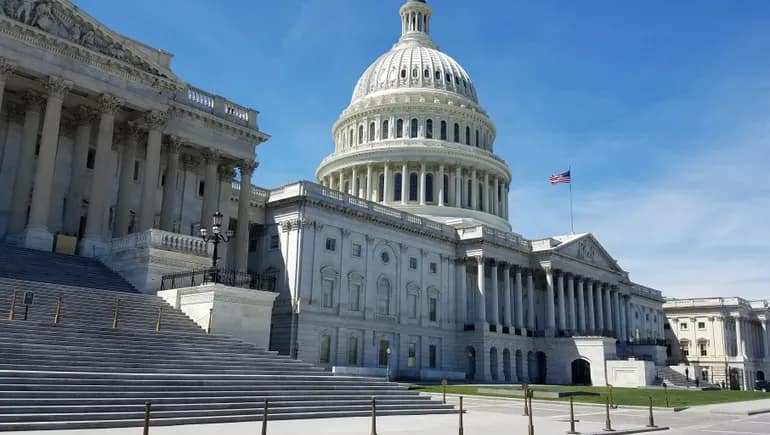On Wednesday, the House Ways and Means Committee issued the latest blow to President Joe Biden’s controversial plan to shore up staffing in America’s skilled nursing facilities, voting 26-17 to bar the CMS from finalizing its controversial staffing minimums rule.
President Biden first announced his intention to increase staffing levels in nursing homes during the 2022 State of the Union. The specific policy, unveiled in September, would be the first federal law of its kind and would require nursing homes to provide three hours of care per resident, per day, with 0.55 hours coming from registered nurses. The rule also stipulates that at least one registered nurse be on duty at all times.
CMS estimated in September that approximately three-quarters of nursing homes nationwide would have to increase staffing in their facilities to comply with the rule.
From the start, it’s been an uphill battle to get buy-in from industry leaders and politicians. Opponents have argued that asking nursing homes to hire additional personnel amid nationwide staffing shortages would be a death knell for facilities, forcing closures and leaving patients and their families — particularly those in rural areas — without options for care.
This week, all Republicans on the House Ways and Means Committee and Democratic Rep. Terri Sewell of Alabama voted to advance the Protecting America’s Seniors’ Access to Care Act, which aims to bar the CMS from finalizing the regulation. The remaining committee Democrats voted no.
The vote has revived debate over the proposed rule, with healthcare lobbyists, including the American Hospital Association and the American Organization for Nursing Leadership, applauding the committee’s move, while patient care advocacy groups, such at the Long Term Care Community Coalition maintaining the rule should be passed as written.
How dire are staffing shortages in America’s skilled nursing facilities?
Proponents and critics of the staffing standards fundamentally disagree on whether the rule is feasible to implement and cite competing evidence to support their claims.
Industry groups say that, by the CMS’ own estimates, most facilities are not equipped to meet the proposed standards. An analysis from research firm KFF painted an even grimmer picture in September, estimating 81% of nursing home facilities nationwide and 90% of for-profit facilities would need to hire additional registered nurses or nurse aides to meet the proposed minimums.
The AHA said in a statement released Wednesday it is “inconceivable” that long-term care facilities could successfully ramp up hiring to such a degree, given many nurses are approaching retirement age, while others continue to report high rates of burnout and intentions to leave the field post-pandemic. The lobbying organization warned facilities could shutter if they had to meet the proposed hiring targets.
In a survey of 441 long-term facilities published Tuesday by industry group the American Health Care Association, seven out of 10 operators reported lower staffing levels than before the COVID-19 pandemic. Nearly half said staffing shortages were causing them to limit admissions.
However, other research suggests some long-term care facilities may be able to hire without facing ruin.
A study published Monday by researchers at UCLA and Lehigh University found that nursing homes in Illinois engaged in financial maneuvering, such as reporting inflated estimates of costs, to appear less profitable and therefore less able to comply with quality initiatives.
The researchers said if nursing homes hired with their fully available profits, the percentage of state nursing homes that would be in compliance with state staffing minimums would jump from 55.2% to 75.6%.
Rich Mollot, executive director of patient care advocacy group LTCCC told Healthcare Dive via email that the industry’s “own data reveal significant profit-making.” His organization has estimated the nursing home industry has an average profit margin of above 8%.
“The vote to advance a prohibition on safe staffing in nursing homes is a performative stunt, sadly indicative of a disturbing willingness by these members of Congress to prioritize industry profits over the well-being of vulnerable seniors and families,” Mollot said.
Unclear path forward for unpopular proposal
While the staffing minimum policy continues to enjoy some support from patient advocate groups who say that increased staffing is linked to better health outcomes for patients, politicians from both sides of the aisle are dubious about the proposal.
This fall, Sens. Kevin Cramer, D-N.D., and Angus King Jr., I-Maine, sent a letter to CMS Administrator Chiquita Brooks-LaSure, citing its possible negative impact on veteran care. Last week, the pair of senators introduced legislation that would require the U.S. Department of Veterans Affairs to conduct a study on the risks of the proposed rule issued by CMS.
Other Democrats, including Reps. Lloyd Doggett, D-Texas, and Jan Schakowsky, D-Ill., have said the staffing proposal does not go far enough and have asked the CMS to strengthen the staffing requirements.
Meanwhile, pressure is building from industry leaders to throw out the proposal entirely. More than 1,100 co-signers asked Congress to stop the CMS from instituting a one-size fits all approach to nursing home staffing in a letter last month.

